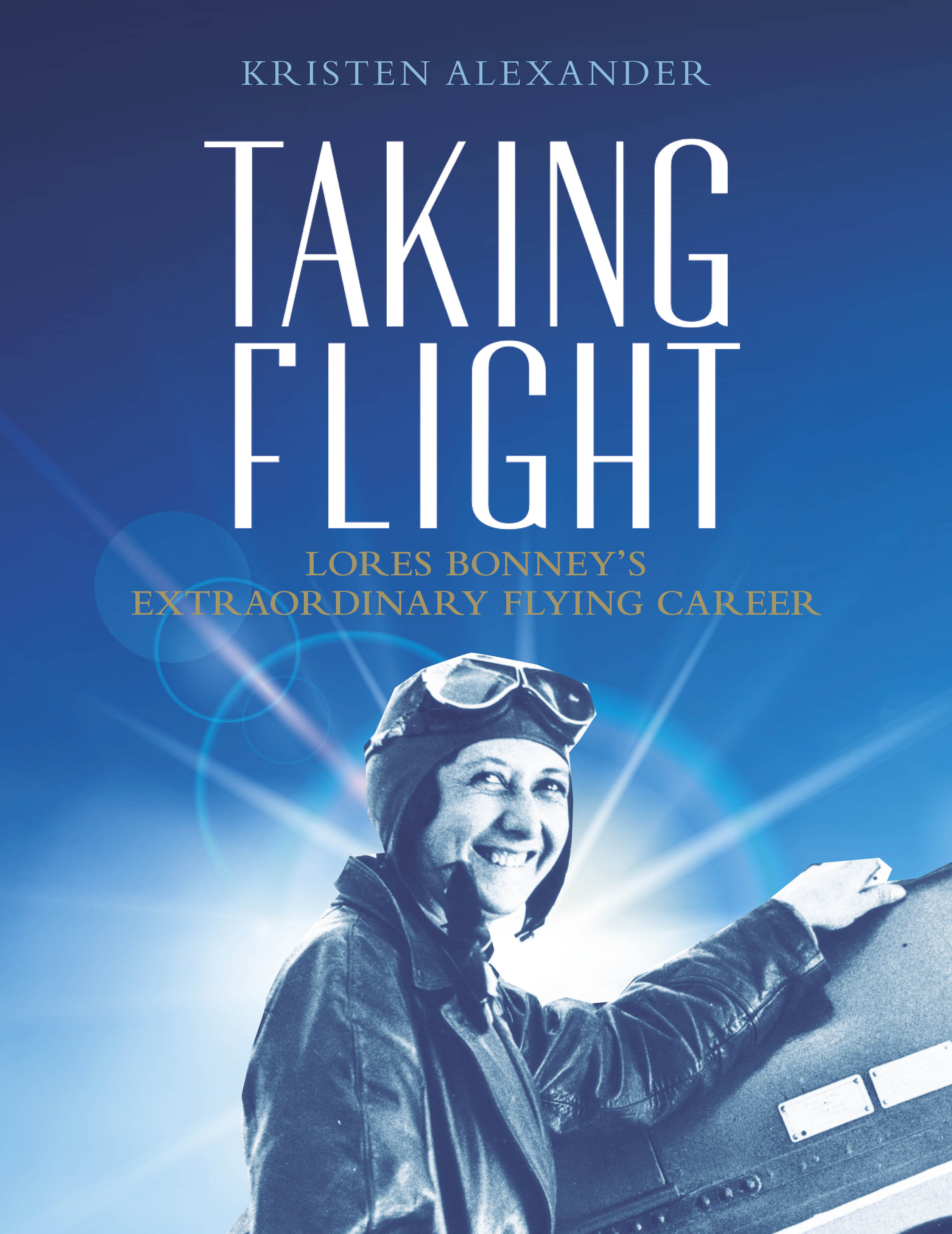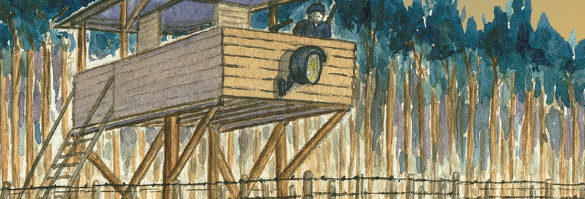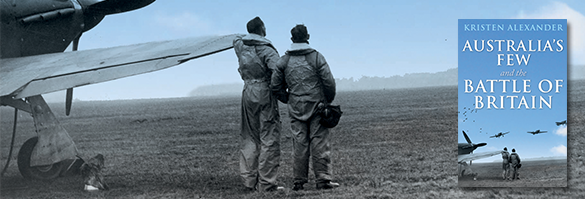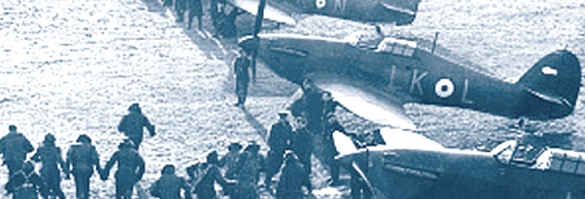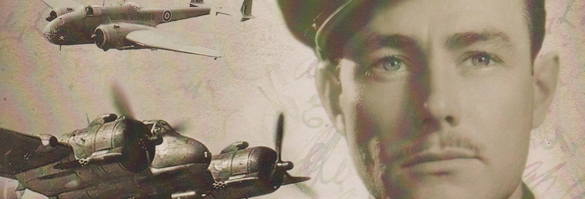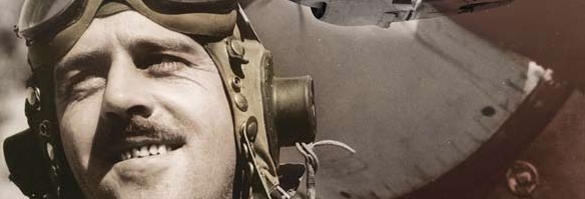Taking Flight
Judges comments, 2017 ACT Writing and Publishing Awards, Taking Flight, Highly Commended: 'This is a vividly-written biography of a truly overlooked Australian pilot. It paints a detailed portrait of a sometimes difficult woman, through a close recounting of her professional life, expertise and considerable skill. Kristen makes the most of the relatively limited sources to weave a narrative judiciously mixing her words with the subject's. ... A valuable contribution to aviation history.'
*****
The Aviation Historian, Issue 18 January 2017 . '... an excellent and well-rounded biography of one of Australia’s important early aviators'.
*****
RAAA News, Autumn 2016: '... author Kristen Alexander tells the airwoman's incredible story with warmth and understanding'.
*****
Aircrew Book Review 22 July 2016 http://aircrewbookreview.blogspot.com.au/2016/07/taking-flight-kristen-a...
*****
Aero Australia. Issue 51 July/Sepember 2016
Kristen Alexander is building a solid reputation as an aviation biographer, and this one about aviatrix Lores Bonney adds to that. Born in South Africa, Lores came to Australia when she was five years old and considering her achievements, its surprising she's not as generally well-known as perhaps she should be. This book helos put things right.
Those achievements are substantial: an Australian record for a one-day flight by a woman in 1931; the first woman to circumnavigate mainland Australia by air (1932) and fly from Australia to England (1933); and the first person to fly solo from Australia to Cape Town in 1937.
Among the sources of information the author had access to were the detailed diaries Lores Bonney kept. The clever use of these makes the storytelling come alive, leaving the reader to feel he or she is in the cockpit sharing all the emotions, fears, highs and lows (of which there were many) that Lores did. The diaries also reveal personal struggles and the relationship with her husband, who bankrolled much of her early flying adventures.
Published by the National Library of Australia in large format soft cover 'coffee table' form, the book is nicely produced and features a large number of illustrations including maps, newspaper clippings and diary extracts.
And important and fitting tribute to Lores Bonney's 'extraordinary flying career'.
*****
Aviation Historical Society of Australia News. Volume 32 Number 3, July, 2016. Reviewer: Anne West
Lores’ first flight was with Bert Hinkler in his Avro Avian, on 7 September 1928 from Eagle Farm, Brisbane. She learnt to fly under the tuition of Captain Charles Cuvet Matheson, the highly regarded owner of Matheson Flying School, in a Gypsy Moth (VH-ULJ). In December 1930, she was gifted a Gypsy Moth (VH-UPV) from her husband (which she affectionately called “My Little Ship”); obtained her private “A” Class licence on 19 August 1931; completed the then-longest flight for an Australian woman in December of that year; obtained her commercial “B” Class licence on 10 January 1932; and went on to become the first woman to fly around Australia later that year. Thus began Lores’ flying career. She went on to complete two further record-setting long distance flights from Australia – taking her Moth to London (1933) and her Klemm KL32x (VH-UVE), also known as “My Little Ship II” to Cape Town, South Africa (1937).
Lores’ contribution to aviation occurred during a time when aeronautical developments were opening up the world (as we know it today), and the “explorers of the skies” were putting their life on the line, pushing machines and humanity equally to their limits. Lores was amidst it all. Through this book, we come to appreciate the high regard and genuine respect offered to her by the male dominated aviation industry, as evidenced by her involvement is numerous official celebrations for national and international aviation achievements. We also grow in understanding about Lores - the woman, who was keen to assist in searching for the lost Stinson, who grieved the untimely deaths of many aviation contemporaries, who held strong ambitions to achieve long-distance flying records, and who balanced this with a deep respect and gratitude for her Husband, whose support of her desires enabled her to pursue them.
Taking Flight evokes the experiences of flying in the 1930’s. It awakens the senses to the realities of flight faced by the pilots of the era – open cockpits, constant vibration, exposure to extreme temperatures and weather conditions (wind, rain, monsoons, heat), the need for emotional and psychological resilience, self-denial of fluids prior to flights, etc. It also reminds us of the dangers that were frequently encountered – engine problems, machine damage, unplanned repairs, forced landings, navigational issues, inadequate maps, fuel supplies, and so on. This book provides open and honest insights as to how Lores responded to, and at times struggled with, exposure to these types of hazards.
Taking Flight is a very informative and engaging read, incorporating many of Lores’ own words to describe how she persevered through the many challenges that came her way. It has been meticulously put together, using multiple primary sources, most notably Lores’ own notes recorded at the time. It is complimented by a large number of visual accompaniments including excellent photographs and highlighted extracts from Lores’ notebooks, to further illustrate her experiences. The 280 pages includes 20 pages of glossary, references, a bibliography, illustration credits and a comprehensive index. Taking Flight is a timely tribute to a little-known Australian pioneer aviatrix, who helped to lay the foundations and blaze the trail for future generations of women, encouraging them to take on various roles within a burgeoning aviation industry. Ultimately, it preserves the realities of Lores’ aviation achievements, and ensures they remain more than just a footnote to history. This book is highly recommended for all those interested in this pioneering era of aviation.
*****
Flightpath, Volume 27, Number 4, May-July 2016. Reviewer Andy Wright.
From the cover's gold-embossed lettering to the beautifully clutter free map in the endpapers, this large format softcover demands to be savoured.
Lores Bonney's extraordinary flying career is on a par with the great Australian, male, pioneers. The first woman to circumnavigate mainland Australia by air. That was 1932. A year later she became the first woman to fly from Australia to England. With flying in her blood, she beat everyone and was the first to fly solo from Australia to Cape Town.
This was all achieved by the second half of 1937 before her fortieth birthday. It was a time of continual aviation achievement, and a very different period socially, and here was a shy (not he public persona) determined pilot flying a DH Moth, and later a Klemm KL 32, on epic solo flights. She was remarkable.
Even a seasoned aviation reader develops a true feeling for the period through the incredible number of images that support the engaging narrative, The personal photos of Bonney, particularly during her travels and working on the aircraft, are astounding. There are no rose-coloured flasses here, and that is also reflected in the writing that is typical from this author. Access to the Bonney Collections held by the NLA and the Powerhouse Museum, and the author's famous eye for social detail, has resulted in a very personal, revealing and sumptous look at a person we should all know. Not until Bonney's manuscripts are publuished, if ever, will there be a greater insight into her life.
*****
The Weekly Times 14 April 2016 http://www.weeklytimesnow.com.au/country-living/taking-flight-kristen-alexander-national-library-of-australia-rrp-3999/news-story/5183fd2108916b6179a4205580c071c7
A FIRST joy flight in an open plane when she was 30 was the start of a brilliant career for record-breaking Australian aviatrix Lores Bonney.
Perhaps a little-known figure from Australian history today, Bonney was a celebrity in her heyday during an era when parts of the globe were still unsurveyed and even experienced solo pilots risked their lives in the air.
Author Kristen Alexander examines the life of Bonney, born Maude Rose Rubens in 1897, in this account of the pilot who was the first woman to circumnavigate mainland Australia by air, the first woman to fly from Australia to England, and the first solo pilot to fly from Australia to South Africa.
Taking Flight uses her diaries, newspaper reports, photographs and official documents to piece together a comprehensive history emphasising the great stamina, skill, fitness, diplomacy and courage needed to get her flights off the ground.
Educated in Melbourne, Bonney settled in Brisbane when she married businessman Harry Bonney who largely financed her life in aviation.
The book also offers a fascinating array of anecdotes such as newspapers reporting a possible fatal accident when Bonney’s plane dropped off the radar during her solo attempt to reach England in 1933, and the time she masterfully handled a plane weighed down with so many treasures from a trip that it took five attempts to get it in the air at take off.
Taking Flight is a lively, fascinating account of a gutsy woman with a grand passion for flight and of a long-gone world before budget journeys on Tiger Air or luxurious travel with Emirates business class.
*****
Sharon Mascall-Dare, Honest History 31 March 2016 http://honesthistory.net.au/wp/review-note-kristen-alexanders-taking-flight-lores-bonney/
It is rare that the word ‘extraordinary’ is justified in the writing of biography. Intrinsic to the craft are stories worth telling, lives less ordinary. In the case of Lores Bonney, however, the word is justified.
As a pioneering female pilot, an aviatrix, of the 1930s, Bonney lived an extraordinary life. Born in South Africa and raised in Melbourne, she was the first female pilot to circumnavigate Australia and the first to fly solo from Australia to England. In 1937 she was the first pilot, of either gender, to make a solo flight across the Indian Ocean from Australia to Cape Town.
Her achievements as an aviatrix – a word rejected by some feminist writers as parenthetical, in setting women pilots apart from their male colleagues – cannot be separated from the sociocultural context that prevailed at the time. Bonney’s ‘unfeminine pursuits’ were largely frowned upon and she banged her head against the proverbial glass ceiling (or enclosed cockpit, as her biographer Kristen Alexander points out).
Alexander’s account of Bonney’s life is highly readable and accessible, with an emphasis on diary extracts, Bonney’s recollections and contemporary newspaper accounts. Notably, there is no agenda beyond engaging scholarship and compelling story-telling – well-executed and presented in this case. Taking Flight captures an extraordinary life in a high quality volume that exploits format and design to maximum effect.
*****
Andrew Willox, Aerogram. Journal of the Friends of the RAAF Museum Inc, March 2016
Kristen Alexander ... takes us into the world of Queensland society in the 1920s and 1930s with her fifth book, and the determination of one woman “...to fly ... or die in the attempt.”
Maude Rose Rubens, who became Lores Bonney, was born in Pretoria and came, with her parents, to Australia in January 1903. Lores’ first flight was with Bert Hinkler, who was related to her by marriage. Marrying into money, Lores found herself supporting her husband in his endeavours, both business and sporting, while she secretly yearned to learn to fly.
Finally persuading her husband, she joined the Matheson School of Flying at Eagle Farm, Brisbane. Charles Matheson had been a pilot with 3Sqn AFC and had continued to fly as a career after the War. Lores displayed aptitude, with Matheson having the confidence to reinstate the student’s control stick of his DH60 Gipsy Moth. Within months of her first solo flight Lores acquired, through her husband’s largesse, her own Gipsy Moth which she name My Little Ship. From this point on she knew that long-distance flying was her passion.
Lores Bonney’s successes spanned an intensive six years through the 1930s. Acknowledged as the first solo woman to do so, she circumnavigated Australia, flew from Australia to Britain and flew from Australia to South Africa.
Kristen Alexander has had unprecedented access to Bonney’s material, much of which is kept in the National Library of Australia and the book quotes liberally from her diaries, which in detail describe her triumphs and tribulations as she encounters appalling weather conditions, mechanical failures and the interaction of those involved in the early days of pioneering aviation.
Kristen manages to engage the reader in these heady times and, as with all her works, she skilfully weaves a tale that is engaging and educational.
Lores Bonney is one of aviation’s lesser-known identities and she deserves far more recognition for her accomplishments. She rubbed shoulders with all the big names of these early years – Amy Johnson, Nancy Bird Walton, Hinkler and Ulm.
Taking Flight is a worthy addition to anyone’s bookshelf, whether you are an aviation aficionado or simply interested in the achievements of pioneers.
*****
6 March 2016. Alison Guesdon, Pittwater Online News http://www.pittwateronlinenews.com/taking-flight-lores-bonney-by-k-alexandernla2016.php
Taking Flight: Lores Bonney's Extraordinary Flying Career enhances understanding of Australia's era of pioneer aviation, and reinforces Lores Bonney's reputation as a significant Australian airwoman. ... This book will ignite the passion for flying in some and be a welcome addition to the library of all those who are enamoured of all aviation history or anyone who once flew or flies still. A wonderful and a great book about an Australian lady written by an Australian lady - perfect for all as a celebration of women for women and men everywhere.
*****
29 February 2016. The Pilots Blog http://www.thepilotsblog.com/the-pilots-news-and-videos/taking-flight-lores-bonney-s-extraordinary-flying-career
‘Taking Flight: Lores Bonney’s Extraordinary Flying Career’ is the latest offering from the established aviation biographer, Kristen Alexander. In this title she builds further upon her reputation as a meticulous researcher with the ability to convey history in a very readable form.
Lores Bonney's life was indeed extraordinary and her airborne achievements were nothing short of remarkable. Her first flight was with no less than famed aviator Bert Hinkler and like Hinkler, she would undertake her epic flights 'solo'. This was made all the more remarkable given the era in which she lived and a woman's work was most certainly not to conquer the skies. And yet she did.
Perhaps it was this male-dominated era and realm that led to her remarkable efforts being somewhat lost in the wake of Sir Charles Kingsford Smith and his contemporaries. Whatever the reason may be, Kristen Alexander has contributed substantially to the preservation of this great aviatrix's legacy. Aided by personal diaries and documents, Bonney comes alive through the pages.
Further enhancing Alexander's book is its tremendous format. Filled with wonderful images and intriguing artefacts, the book itself lives in both the worlds of biography and the coffee table. This endearing title can be read comfortably from start to finish as a detailed life's tale or be at home as a richly illustrated book that can be revisited time and time again as an inspiring reference.
Bonney was a remarkable aviator and an inspiring woman. Her achievements are now recorded precisely and presented attractively in ‘Taking Flight’ by Kristen Alexander in a fitting tribute to Lores Bonney’s extraordinary flying career.
I really enjoyed this book and learnt a lot about this Australian Aviatrix, her life and her record breaking flights.
I very much enjoyed how this book was set out and found it an easy read which made sense chronologically so you follow her journey, if you like, into the world of aviation and her later years when she stopped flying.
Interview with Kristen at http://www.canvaswings.com/listen/
*****
From John Ulm's foreword to Taking Flight.
Kristen Alexander's Taking Flight has it all. The sheer lyricism of flight - the curves and swoops, your own dimension. The lady of the sky has grace of line - with a mind of steel.
